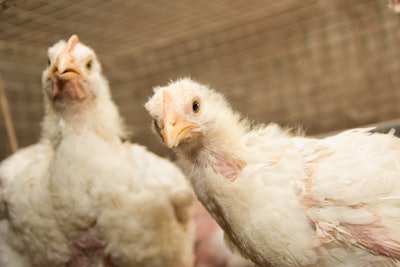
By 2030, the world’s population is projected to continue to grow at a declining rate; the exception again being Sub-Saharan Africa, which should see a year-over-year change from just 2020 to 2021 of 32 million people, according to projections from the latest OECDFAO Agricultural Outlook publication (Figure 1).
By 2030, FAO projects developed countries will have increased production by slightly more than 11%, while developing countries will nearly double this growth to 22% from the average period of 2018-20 (Table 1). Likewise, developing countries will account for nearly double the consumption growth of developed countries over the average of the base period 2020 to 2030, because of rising human population and increasing incomes, particularly in countries where there are no cultural/religious restrictions on eating poultry meat.
Regional production, consumption
The Asia Pacific region as well as Latin America and the Caribbean, followed by North America, will show the largest contributions to poultry meat production by 2030. However, once again, all regions are projected by FAO to have at least some increase from the average of the base period 2018-20 and 2030 (Figure 2). FAO data on poultry meat production and consumption by region shows that lower-middle income countries will lead growth in production from 2021 to 2030, while consumption will be led by low-income countries (Figure 3).
World prices and the EU
While the nominal price of poultry meat worldwide, or the price unadjusted for inflation, is expected to continue to rise over the next decade to 2030 to US$1,664 per metric ton, the real (inflation adjusted) price is projected to fall to USD$1,391 per metric ton in 2030 (Figure 4).
In the European Union, poultry meat production continues to slowly rise and is forecast to reach more than 14 million metric tons by 2030, which is a very negligible increase from 2029 (Figure 5). Pork will continue to be the most eaten meat in the EU over the coming decade, even though per capita pork consumption in the EU is projected to decline slightly from 33.4 to 32.0 kilograms from 2020 to 2030, according to FAO estimates (Figure 6). Expected declines in per capita consumption of both pork and beef in the EU is expected to be offset by an increase in poultry meat consumption from 23.4 to 24.6 kilograms per capita from 2020 to 2030. If these estimates are correct, per capita poultry consumption in the EU in 2030 will be 51% higher than it was in 2000.
More data available from the forecast section
EU meat consumption per capita by meat type 2020-30
EU poultry meat production forecast to 2030
Poultry meat market projections avg 2018-20 to 2030
Poultry meat production by region avg 2018-20 vs. 2030
World population growth by region to 2030
World poultry meat price projections 2021-30

















